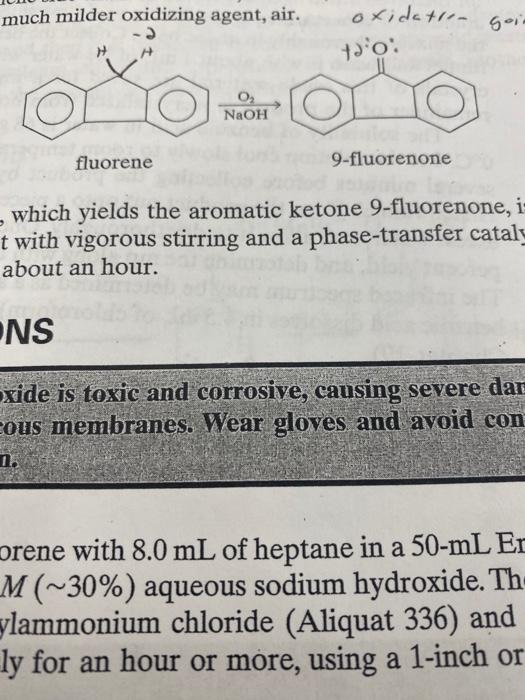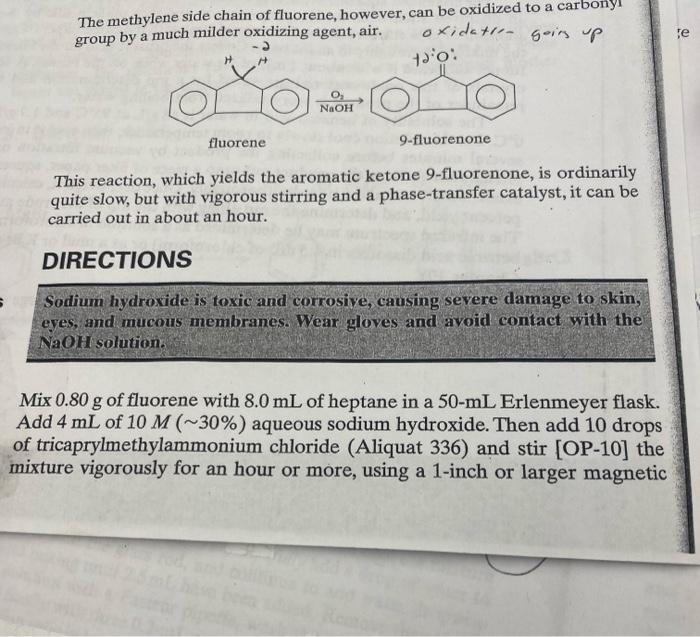which yields the aromatic ketone 9-fluorenone, t with vigorous stirring and a phase-transfer cataly about an hour. NS xide is toxic and comosive, causing severe dat ous membranes. Wear gloves and avoid con n. orene with 8.0mL of heptane in a 50mLE M(30%) aqueous sodium hydroxide. Th ylammonium chloride (Aliquat 336) and ly for an hour or more, using a 1-inch or The methylene side chain of fluorene, however, can be oxidized to a carboiny group by a much milder oxidizing agent, air. oxidcti- goirs up This reaction, which yields the aromatic ketone 9-fluorenone, is ordinarily quite slow, but with vigorous stirring and a phase-transfer catalyst, it can be carried out in about an hour. DIRECTIONS Sodium hydroxide is toxic and corrosive, causing severe damage to skin, eyes, and mucous membranes. Wear gloves and avoid contact with the NaOII solution. Mix 0.80g of fluorene with 8.0mL of heptane in a 50mL Erlenmeyer flask. Add 4mL of 10M ( 30%) aqueous sodium hydroxide. Then add 10 drops of tricaprylmethylammonium chloride (Aliquat 336) and stir [OP-10] the nixture vigorously for an hour or more, using a 1-inch or larger magnetic which yields the aromatic ketone 9-fluorenone, t with vigorous stirring and a phase-transfer cataly about an hour. NS xide is toxic and comosive, causing severe dat ous membranes. Wear gloves and avoid con n. orene with 8.0mL of heptane in a 50mLE M(30%) aqueous sodium hydroxide. Th ylammonium chloride (Aliquat 336) and ly for an hour or more, using a 1-inch or The methylene side chain of fluorene, however, can be oxidized to a carboiny group by a much milder oxidizing agent, air. oxidcti- goirs up This reaction, which yields the aromatic ketone 9-fluorenone, is ordinarily quite slow, but with vigorous stirring and a phase-transfer catalyst, it can be carried out in about an hour. DIRECTIONS Sodium hydroxide is toxic and corrosive, causing severe damage to skin, eyes, and mucous membranes. Wear gloves and avoid contact with the NaOII solution. Mix 0.80g of fluorene with 8.0mL of heptane in a 50mL Erlenmeyer flask. Add 4mL of 10M ( 30%) aqueous sodium hydroxide. Then add 10 drops of tricaprylmethylammonium chloride (Aliquat 336) and stir [OP-10] the nixture vigorously for an hour or more, using a 1-inch or larger magnetic








